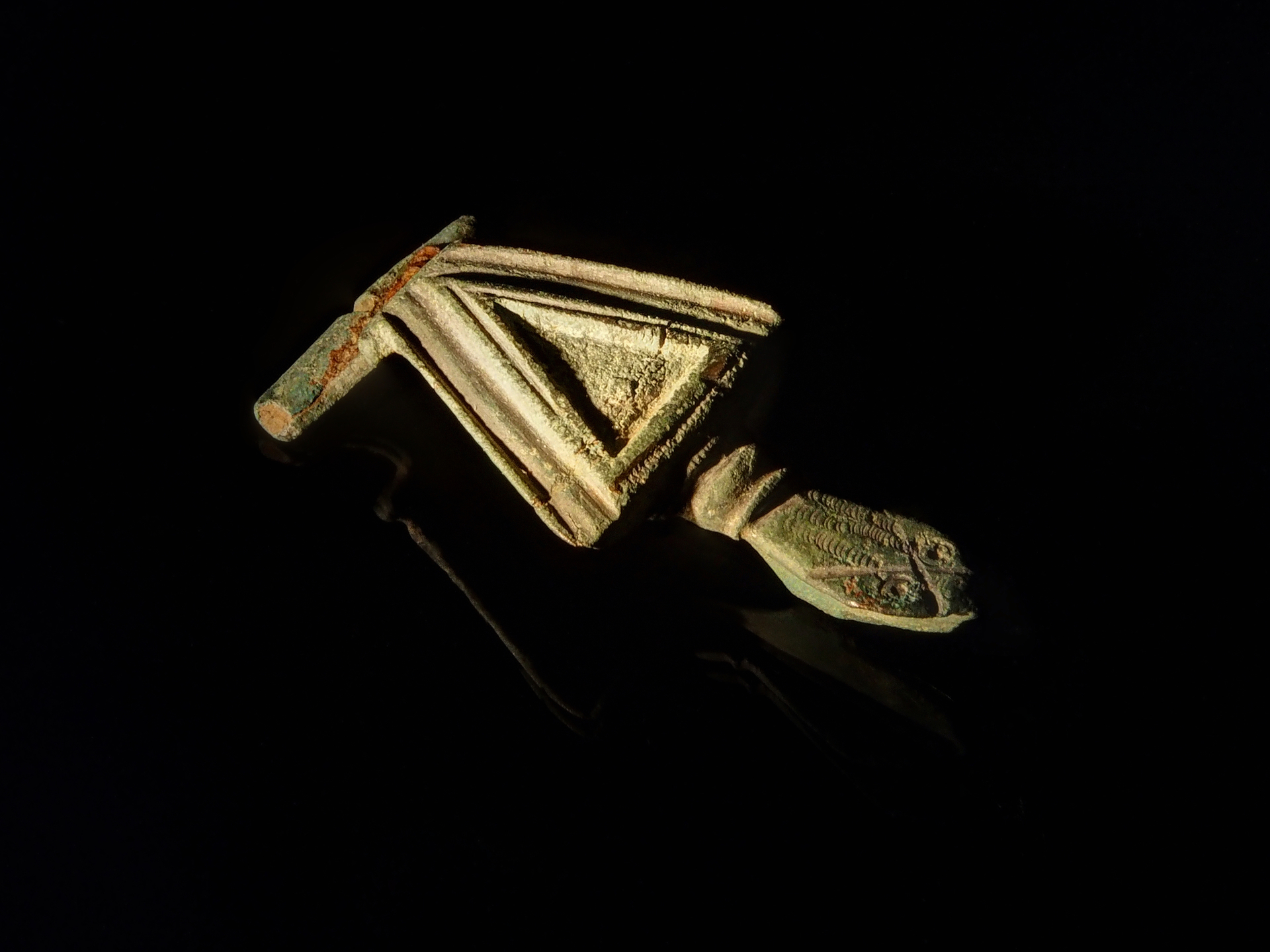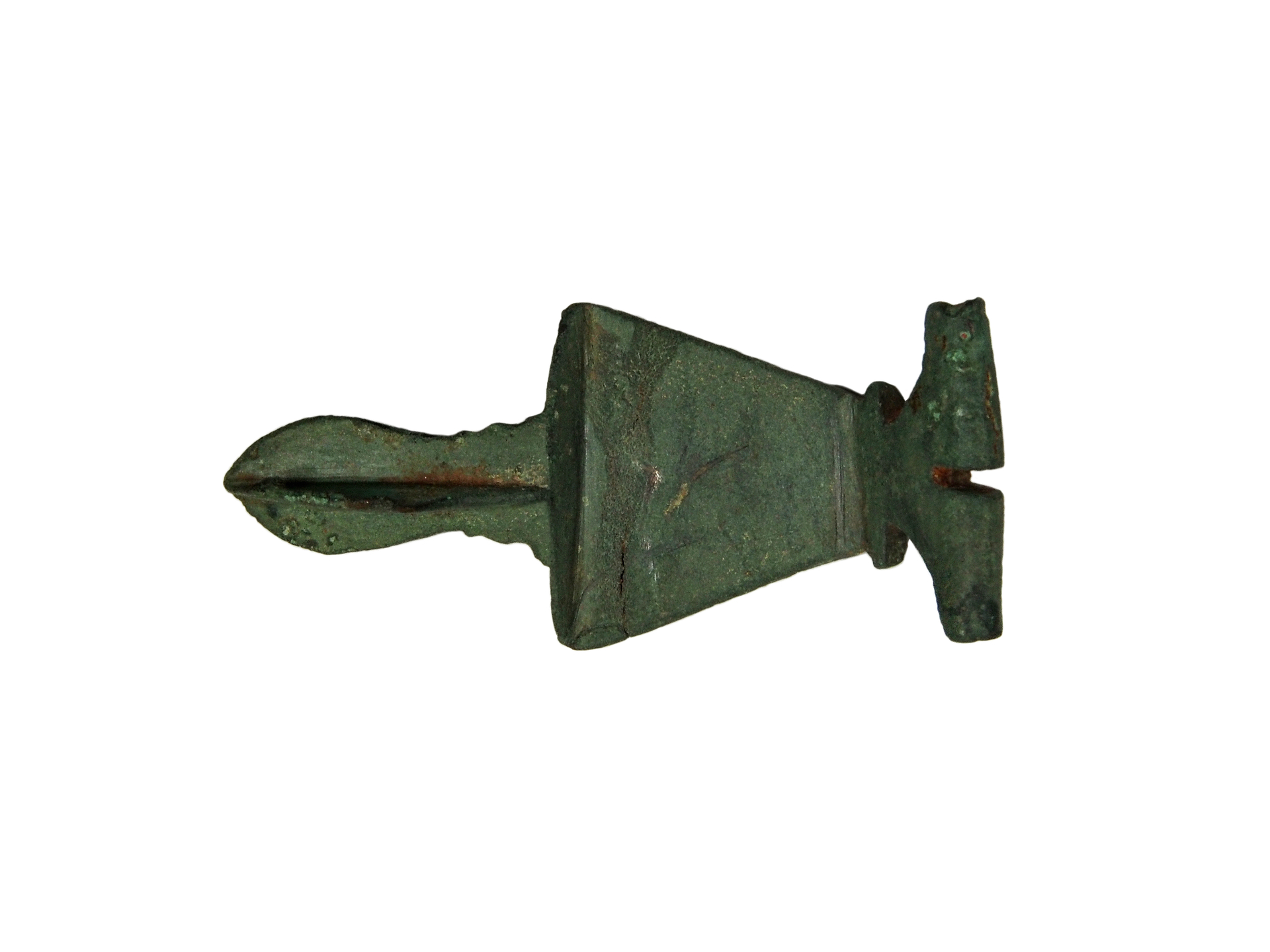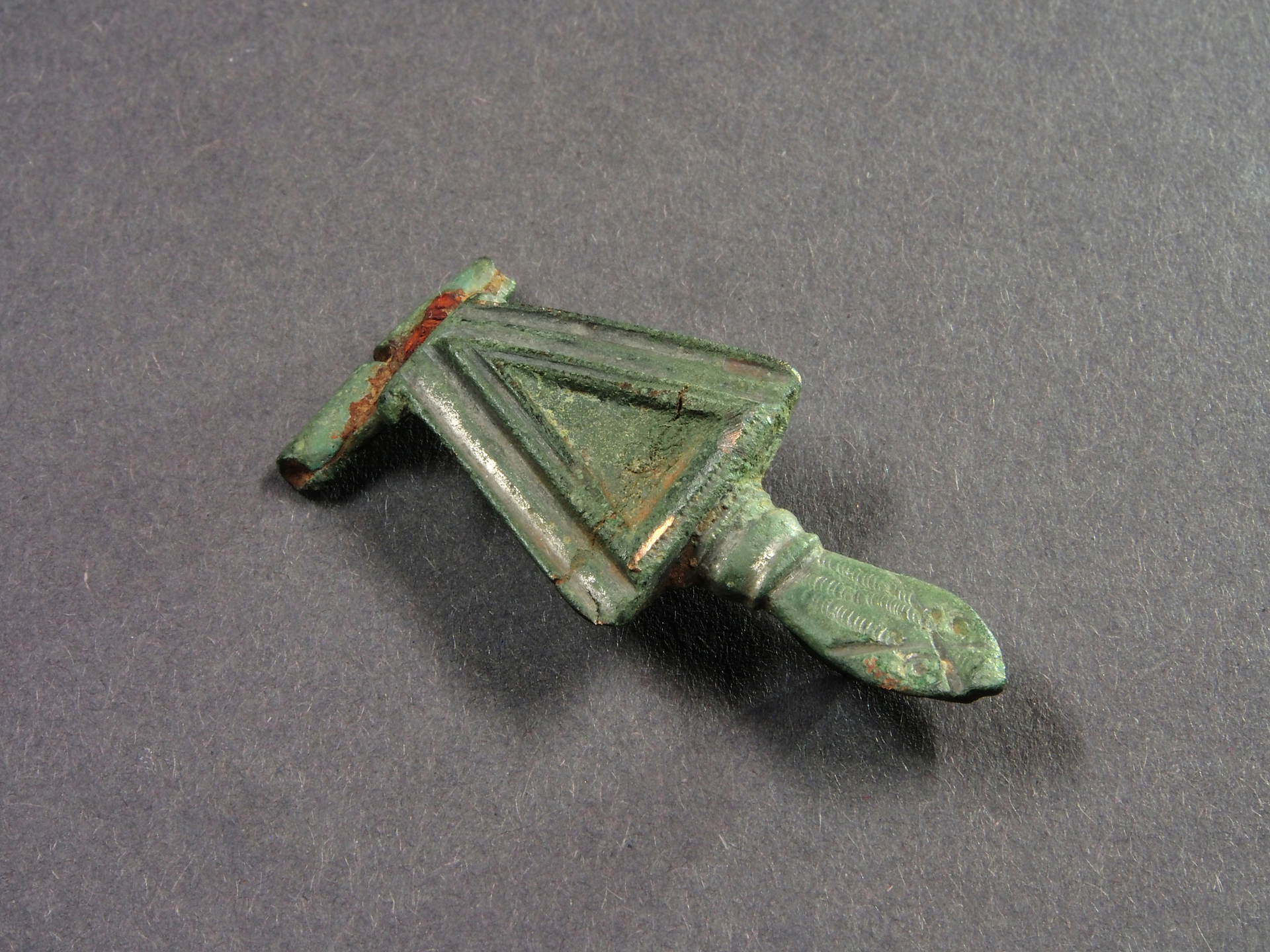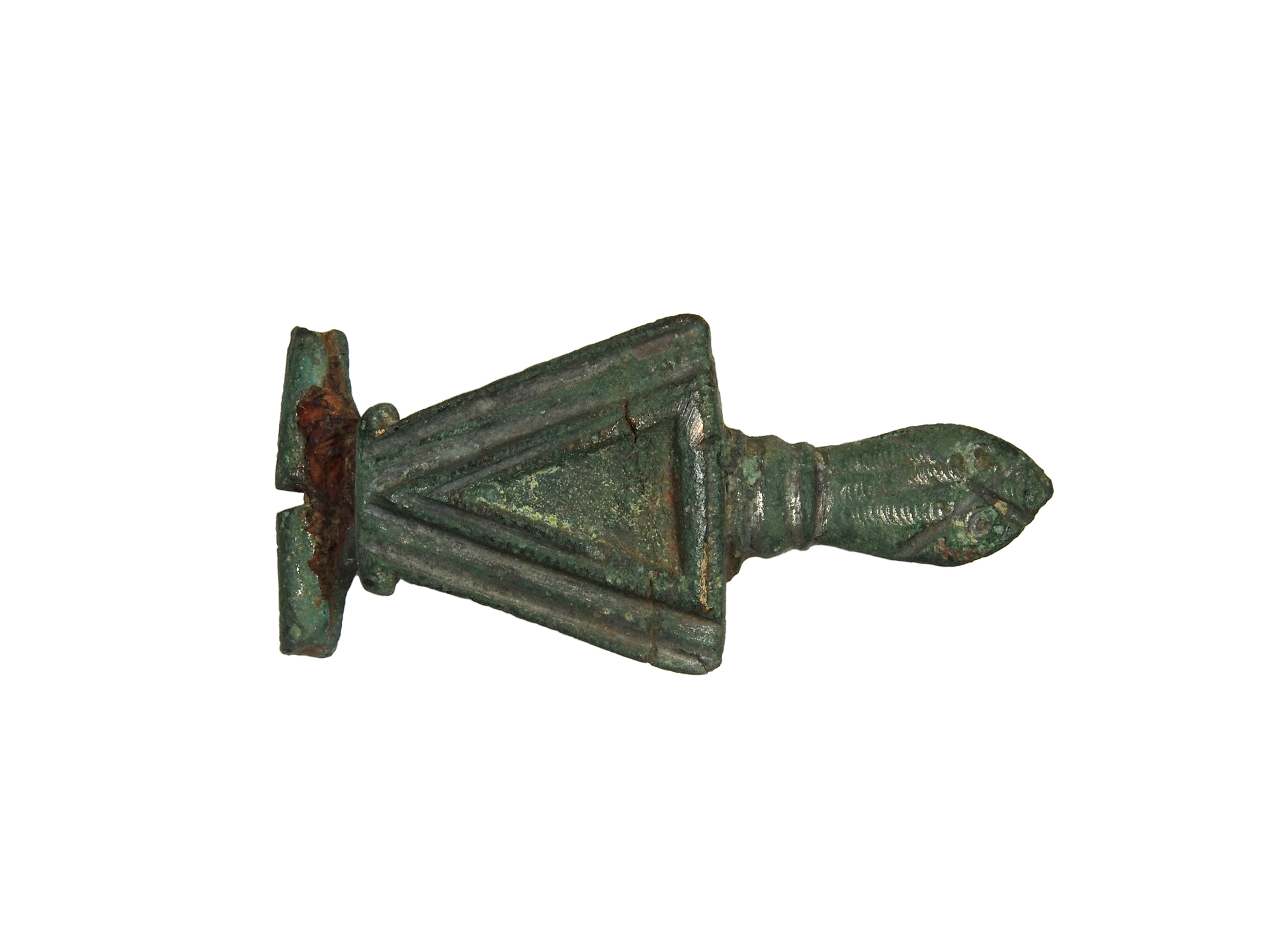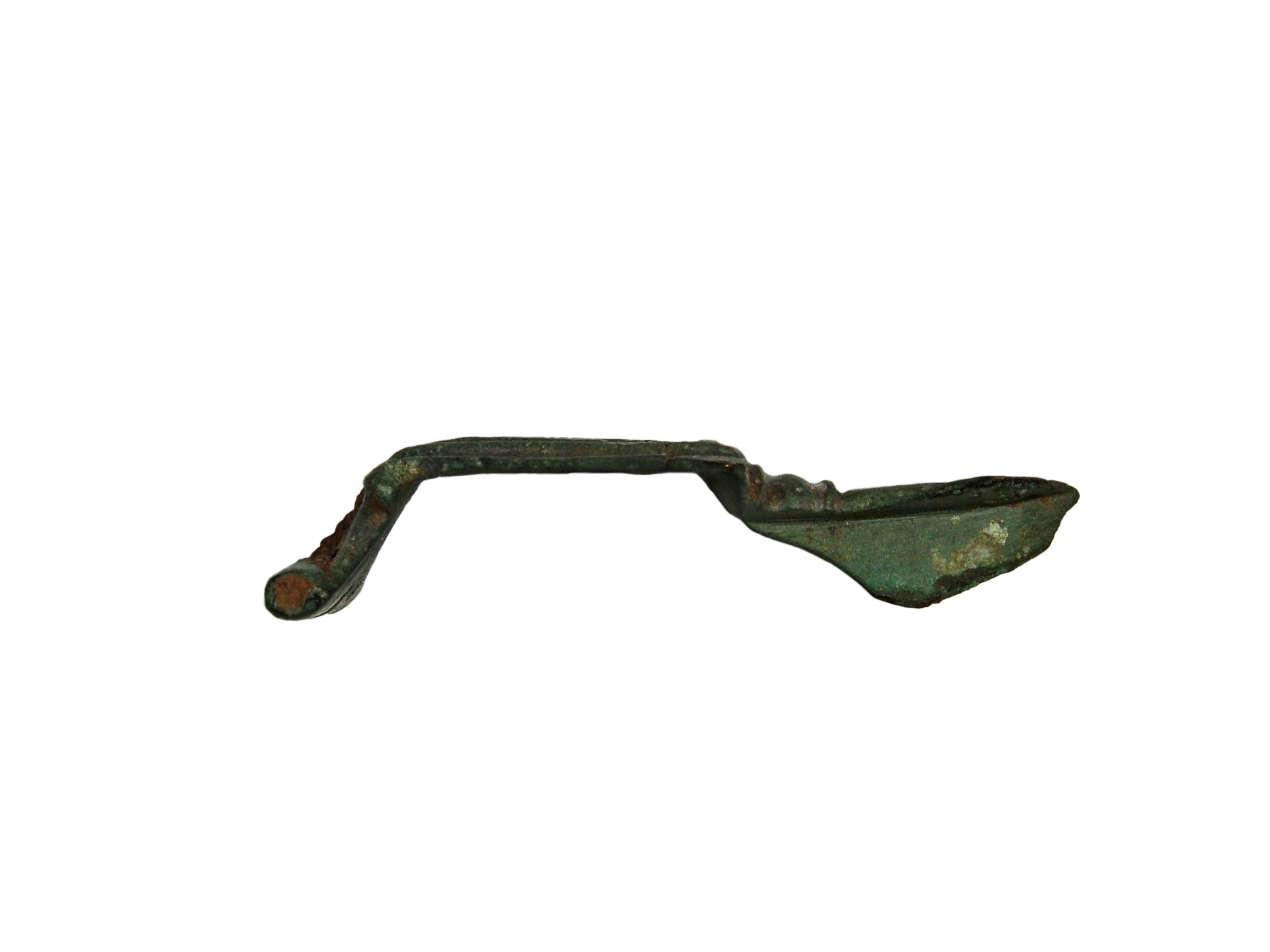Category:
Period:
Dating:
Description:
Enamel bow brooch with sleeve hinge and split bow of the Riha 5.17.5 variant or Feugère type 26b1 or Callewaert type II.C.2.f
Material:
Bronze
Enamel
Enamel
Weight:
6,75 g
Length:
45,9 mm
Width:
26,6 mm
Condition:
Completely preserved
Detector find:
Yes
Collection:
Archäologische Denkmalpflege der Stadt Einbeck
Country:
Germany
County:
Northeim
Front / Cleaned with water & brush
Rear / Cleaned with water & brush
Social Media & E-mail
Copy and share link:
To write a comment, please log in.
























Jan 26.10.2023
Really great piece
1 Reply
Markus Wehmer 26.10.2023
Found Magnus.
2
Jan 26.10.2023
What type of primer is it?
Markus Wehmer 28.10.2023
Enamel bow brooch Riha type 5.17.5 or Feugère type 26b1 or very precisely Callewart type II.C.2.f
1
Markus Wehmer 28.10.2023
Here is a short find report that will appear in the spring in "Archaeology in Germany": Roman enamel bow brooch from Einbeck In the spring of 2022, a very special find was discovered southwest of Einbeck on a well-known settlement site from the Roman Imperial period, which is located on a terrace edge of the Ilme, a western tributary of the Leine, and is being systematically prospected with a metal detector by the certified detectorist Magnus Kliewe on behalf of the municipal archaeology of the city of Einbeck. It is a Roman enamel bow brooch with a sleeve hinge and split bow of the Riha 5.17.5 variant or Feugère type 26b1 or Callewaert type II.C.2.f. The brooch, which is completely preserved except for the pin, has a length of 45 mm and a width of 22 mm and thus belongs to the upper size range of this brooch type. The trapezoidal, almost triangular and profiled plate has a large, single-coloured field of enamel, of which only a few remains have survived. The brooch foot is in the shape of an animal head. Animal head feet of this type are only found in enamel brooches and can rarely be identified with any precision due to the varying degrees of abstraction, which is why only a general identification as a reptile is usually made. The animal head foot of the Einbeck specimen is divided by an X-shaped notch and has a pair of punched ring eyes and three rows of arched punches, which are supposed to represent scales. The very distinctive nose and the beak-like mouth allow it to be reliably identified as a turtle. Similarly detailed animal head feet have been handed down from a brooch from the Gallo-Roman sanctuary of Chastelard de Lardiers in the Maritime Alps in southeastern France and from a brooch from the Roman colony of Augusta Raurica (now Augst and Kaiseraugst in northern Switzerland). The Einbeck enamel bow brooch can be dated to the end of the first and the first half of the second century through comparative finds, and thus belongs to the late part of the early Roman Imperial period (level B2). A completely identical example is known from grave 148 in Rheinzabern. Enamel bow brooches are common and varied in the Roman provinces as civilian clothing decorations, from the western provinces (Narbonensis) to the Danube region (Pannonia). In the Barbaricum, however, they are extremely rare. So far, neither a production site nor a narrowly defined area of distribution has been identified, although most of the published comparative pieces come from the area between the Seine, the northern edge of the Alps, the Rhine and the North Sea.
1
1 Reply
Jan 28.10.2023
Absolutely impressive and great find report!!
Related finds
Brass
3.4.2025 (VT-5RZG368E)
Osnabrück (DE)
Bronze
9.4.2025 (VT-P5S87BD7)
Osnabrück (DE)
Silver
TB
16.3.2025 (VT-563M9IMQ)
Region Hannover (DE)
Bronze
Clothes & fibulas > fibula > fibula with hinge > Hinged fibula with eyelet > disk fibula > coin fibula
Brass, Gold
Clothes & fibulas > fibula > fibula with hinge > Hinged fibula with eyelet > disk fibula > coin fibula
Brass, Gold
14.3.2024 (VT-YJI4E767)
Gifhorn (DE)
Clothes & fibulas > fibula > fibula with hinge > Hinged fibula with eyelet > disk fibula > cross enamel disk fibula
VH
18.3.2024 (VT-7P84FGI4)
Region Hannover (DE)
9th - 10th century AD
Bronze, Enamel
Bronze, Silver
